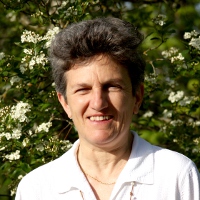Projecting future effects of land management, natural disturbance, and CO2 on woody encroachment in the Northern Great Plains in a changing climate.
Conservation organizations have identified the Northern Great Plains (NGP) as a biologically significant region and priority conservation area because it contains large tracts of native prairie that provide habitat for declining grassland species. Maintaining this habitat into the future requires anticipating the effects of increasing atmospheric CO2 concentrations and climate change on the region’s vegetation. One way these changes threaten NGP grasslands is through the potential encroachment of native woody species into areas where they were previously minor components, a phenomenon that is well documented on the edges of the NGP. Woody encroachment may result from increasing CO2 concentrations, changes in the timing of precipitation, interactions of changing grazing and fire regimes, or more likely a combination of all of these factors.
In this project, the MC1 dynamic vegetation model will be used to simulate vegetation type (C3/C4 grassland, shrubland, woodland, forest) for the NGP for a range of projected future climates and relevant management scenarios. For example, simulations with moderate grazing and either a full suppression or natural fire regime will illustrate the expected effect of fire management on woody species in the region. Comparing results of simulations using various climate futures, or using constant vs. increasing CO2, will illustrate the sensitivity of woody encroachment projections to these factors. The improved understanding of the relative importance of increasing CO2, climate change, and land management practices on potential woody encroachment derived from these simulations will be used to discuss which management practices will be most effective in protecting grassland habitat in the NGP into the future.
Lead PI: Amy Symstad
Funded by North Central Climate Science Center



